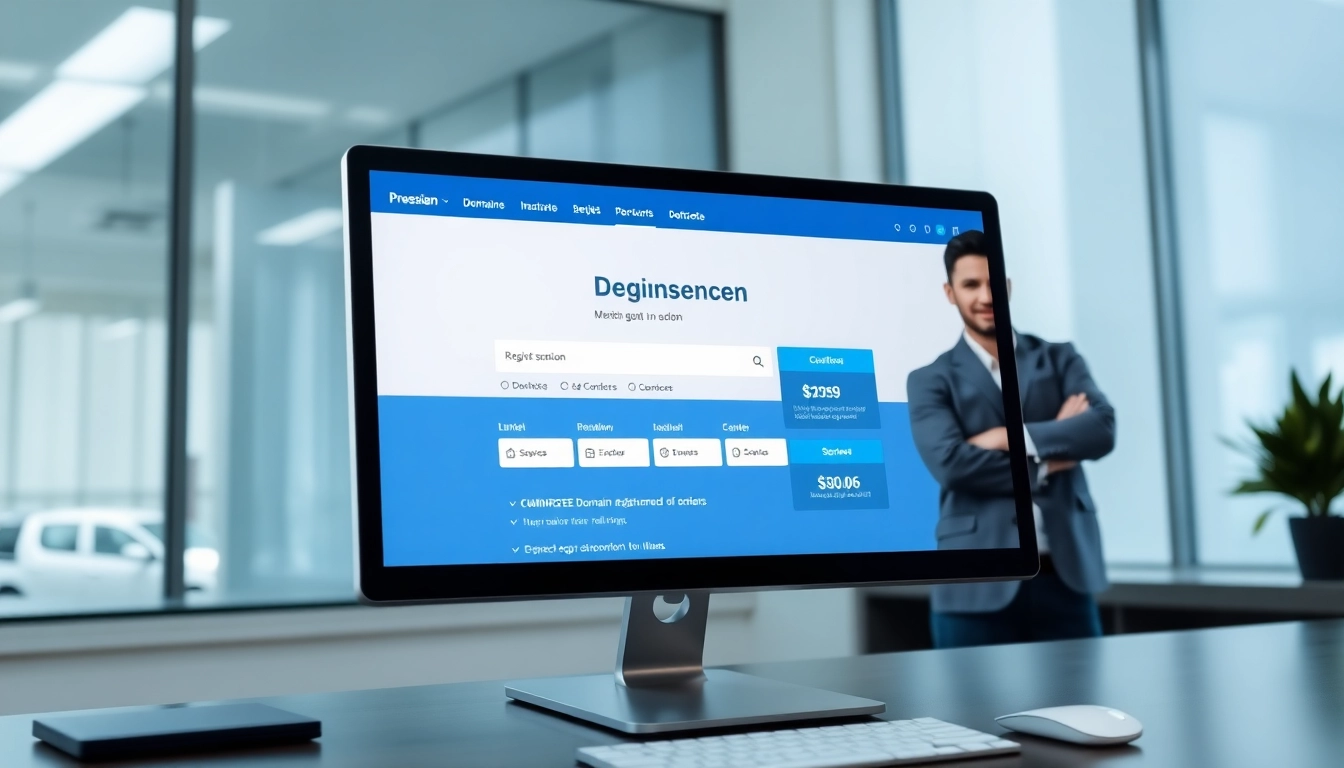In the fast-evolving digital economy, the way customers interact with brands is increasingly shaped by technology that enhances usability, speeds transactions, and personalizes experiences. The convergence of user experience (UX) design, AI-enabled operations, and data-driven marketing creates a powerful engine for growth across e-commerce, services, and construction industries alike. By focusing on how people navigate interfaces, how systems anticipate needs, and how insights translate into measurable outcomes, organizations can unlock cleaner checkout journeys, smarter operations, and more compelling value propositions. This article explores a comprehensive, actionable framework across six interlinked domains—UX-driven commerce, AI-enabled operations, multi-channel customer interactions, STP (Segmentation, Targeting, Positioning) in the data age, design-led construction technology, and practical tips for hiring designers and building efficient teams—anchored by real-world strategies, benchmarks, and implementation steps. technology sits at the center of these discussions, guiding decisions from research to ROI.
Technology-Driven UX: Crafting Seamless E-commerce Journeys
Foundations of technology in UX design
Successful e-commerce UX starts with a disciplined foundation that places the user at the heart of every decision. This means combining rigorous user research with systematic design processes to create interfaces that feel intuitive, predictable, and fast. Key foundations include:
– User-centered research: employ mixed-methods research (qualitative interviews, usability tests, surveys) to uncover motivation, friction points, and unmet needs.
– Clear information architecture: organize products and content around user mental models, ensuring that navigation, filtering, and search are predictable and efficient.
– Accessible design: meet WCAG 2.1 guidelines to serve all users, including those with disabilities, and ensure that color, typography, and motion support readability.
– Performance discipline: optimize front-end performance (time to interactive, first meaningful paint) because speed correlates with higher conversion and lower bounce rates.
– Design systems and component libraries: create reusable patterns that ensure consistency, speed product development, and reduce cognitive load for users.
– UX writing and microcopy: craft concise, helpful copy that reduces ambiguity at critical moments—especially during checkout.
Applied properly, these foundations reduce friction, shorten the time to purchase, and improve customer confidence. In practice, you begin with an UX audit of the current storefront, map critical customer journeys (from arrival to post-purchase), and translate insights into a prioritized backlog of improvements. By aligning product, engineering, and marketing teams around shared UX metrics (conversion rate, task success rate, error rate, and time-on-task), organizations can build momentum toward measurable improvements rather than sporadic optimizations.
Mapping user tasks to technology-enabled checkout flows
Checkout is the focal point where UX, product strategy, and technology intersect. Mapping user tasks to technology-enabled flows involves translating tasks—discovering a product, selecting options, entering payment details, confirming orders—into a cohesive, low-friction journey. Implement the following steps:
– Task modeling: document each user task with step-by-step flows, decision points, and potential errors. Use service blueprints to visualize front-end interactions and back-end processes (inventory checks, payment authorization, fraud screening).
– Streamlined checkout design: minimize form fields, enable auto-fill, integrate one-click or saved-payment options, and offer guest checkout with a seamless path to account creation after purchase.
– Progressive disclosure: reveal complexity only when needed (e.g., advanced shipping options or tax calculations) to reduce cognitive load.
– Error resilience: provide real-time validation, inline guidance, and clear recovery options if a payment fails or an item is out of stock.
– Data-driven optimization: instrument checkout with event tracking to understand drop-off points and identify the most impactful optimizations (e.g., simplifying shipping costs display or eliminating redundant confirmations).
Technology choices matter here. Lightweight front-end frameworks, robust state management, secure payment gateways, and flexible shipping APIs collectively determine how smoothly a checkout flows. The best implementations empower customers to complete a purchase quickly and with confidence, while preserving security and compliance (PCI-DSS, data privacy). A well-designed checkout not only converts but also reduces post-purchase friction, supporting repeat business and higher overall customer lifetime value.
Measuring technology-driven UX outcomes
Performance metrics must go beyond vanity numbers to reveal true impact on the bottom line and customer satisfaction. Consider a balanced set of metrics that cover efficiency, effectiveness, and experience:
– Conversion rate and revenue per visitor (RPV): track improvements during controlled experiments and in live environments.
– Task success rate and time-on-task: measure how long it takes users to complete key tasks and how often they succeed on first attempt.
– Cart abandonment rate: analyze stages where drop-off occurs and test mitigations (reassuring copy, shipping estimates, friction-reducing CTAs).
– Error rate and recovery: quantify payment failures, validation errors, and the speed with which users recover.
– Customer effort score (CES) and Net Promoter Score (NPS): gauge perceived effort and overall satisfaction after interactions.
– Post-purchase behavior: monitor return rates, warranty claims, and repeat purchase frequency to assess long-term UX impact.
A practical approach combines A/B testing, multivariate testing, and cohort analysis to validate changes. Establish a lightweight experimentation framework with clear hypotheses, success criteria, and a plan for rolling out winning variants. Regular UX reviews—quarterly or after major product launches—help ensure that learning translates into sustained improvement rather than episodic wins.
Technology Deployment for AI-Driven Operations
Selecting the right technology stack for AI initiatives
AI initiatives require thoughtful alignment of data, models, and infrastructure. The right stack should support data ingestion, model training, deployment, monitoring, and governance. Core considerations include:
– Data foundation: establish clean, centralized data lakes or warehouses with robust lineage, governance, and quality controls. Data must be labeled, standardized, and accessible to both analysts and AI models.
– Model lifecycle management: adopt MLOps practices that cover versioning, testing, deployment, monitoring, and rollback. Use containerization and orchestration to keep models reproducible in production.
– Compute and scalability: choose a scalable cloud-based or hybrid environment that accommodates peak workloads, with cost controls and auto-scaling policies.
– Tooling and frameworks: leverage established AI platforms for model development (e.g., Python-based ecosystems, AutoML capabilities, feature stores, and model monitoring tools).
– Security and compliance: ensure data security, access control, and privacy protections are baked into the stack, with auditable processes for governance and risk mitigation.
A pragmatic approach starts with a small, well-scoped pilot that demonstrates measurable value. Use the pilot to validate data readiness, model performance, and business alignment. From there, iteratively expand scope, ensuring that each scale-up maintains governance, observability, and alignment with organizational goals. The objective is to build a repeatable process that converts data into reliable, responsible AI-driven outcomes.
Governance and ethics in technology adoption
Governance for AI and technology is about accountability, transparency, and risk management. Establish a framework that addresses:
– Fairness and bias mitigation: test models for disparate impacts and implement corrective measures where necessary.
– Explainability: provide stakeholders with understandable explanations of decisions, especially in customer-facing systems (pricing, recommendations, eligibility).
– Privacy and consent: implement data minimization, consent management, and robust data protection practices aligned with regulations (GDPR, CCPA, etc.).
– Compliance and risk: maintain a risk register for deployment, including third-party software and data suppliers; align with internal ethics guidelines and external standards.
– Auditability: retain clear logs for data usage, model training, evaluation metrics, and decision rationales to support audits and continuous improvement.
Ethical governance increases trust and reduces the likelihood of costly missteps. It also accelerates stakeholder buy-in for AI initiatives by clarifying the value proposition and the safeguards that protect customers and the business.
Measuring ROI of technology projects
ROI for technology and AI projects should combine financial and strategic dimensions. Consider a framework that includes:
– Total cost of ownership (TCO): include development, deployment, maintenance, data storage, and security costs.
– Payback period and net present value (NPV): forecast cash flows from efficiency gains, reduced errors, and incremental revenue, discounted to present value.
– Value-based metrics: quantify improvements in accuracy, speed, or personalization quality; translate these into potential uplift in conversion, average order value, or customer lifetime value.
– Intangible benefits: capture the value of better risk management, brand trust, and employee productivity, which can be significant but harder to monetize.
– Risk-adjusted scenarios: run sensitivity analyses to understand how changes in data quality, model performance, or adoption rates affect ROI.
A structured ROI narrative helps executives balance short-term needs with long-term strategic positioning. It also supports prioritization across a portfolio of AI initiatives based on measurable impact and feasibility.
Technology-Enhanced Customer Interactions Across Channels
Omnichannel technology strategies for engagement
Today’s customers expect a seamless experience across touchpoints—web, mobile, social, email, chat, and in-store experiences. An effective omnichannel strategy integrates data, systems, and workflows so that customer context travels with the user. Practical steps include:
– Unified customer profile: consolidate identities, preferences, purchase history, and behavior into a single view accessible to every channel.
– Channel consistency: harmonize messaging, tone, and recommendations to ensure a coherent brand experience regardless of where a customer engages.
– Real-time orchestration: use event-driven architectures to trigger timely, relevant interactions (e.g., post-purchase confirmations, re-engagement prompts) across channels.
– Cross-channel service: enable agents to view the customer journey across touchpoints, reducing repetition and enhancing resolution speed.
– Measurement and governance: track cross-channel metrics (completion rate, time to resolution, CSAT) and enforce data governance to protect privacy and ensure data quality.
A well-executed omnichannel approach not only increases revenue opportunities but also deepens customer loyalty by delivering contextually aware experiences at every turn.
Personalization powered by technology
Personalization through data and AI has moved from a novelty to a baseline expectation. Leveraging customer data and predictive signals, organizations can tailor content, product recommendations, and journeys in real time. Implement a practical personalization program with these components:
– Behavioral data capture: collect click streams, search terms, and engagement signals to infer intent and preferences.
– Segmentation and dynamic content: serve personalized banners, product assortments, and emails based on evolving segments and user state.
– Recommendation engines: deploy collaborative filtering, content-based methods, or hybrid approaches to surface relevant products.
– Privacy-aware personalization: provide clear opt-in/opt-out choices and transparent data usage explanations to build trust.
– Testing and governance: continuously test personalization strategies (A/B tests, multivariate tests) to measure lift and ensure alignment with brand and compliance requirements.
The goal is to deliver meaningful, timely, and respectful personalization that enhances value without overwhelming customers with irrelevant prompts.
Performance metrics for technology-enabled CX
Measuring customer experience (CX) performance in tech-enabled ecosystems requires a disciplined set of indicators that tie to business outcomes. Recommended metrics include:
– CSAT and CES: capture customer satisfaction and effort to complete interactions.
– NPS: assess loyalty and willingness to recommend.
– First contact resolution (FCR): reflect service efficiency and customer satisfaction in support interactions.
– Channel-specific engagement metrics: engagement rate, response time, and resolution quality per channel.
– Personalization impact: track lift in conversion, average order value, and repeat purchase rate attributable to personalized experiences.
– System reliability: monitor uptime, latency, and incident response times to ensure that technology supports seamless experiences.
Regular dashboards and quarterly reviews help teams translate CX metrics into action, guiding improvements in product, marketing, and support strategies.
STP in Action: A Hands-On Guide from Segmentation to Positioning
Market segmentation techniques and technology inputs
Segmentation is about dividing a broad market into meaningful groups that respond similarly to offers and messaging. Modern segmentation combines traditional approaches with data-driven techniques to reveal sharper opportunities. Key techniques and inputs include:
– Demographic and firmographic data: baseline segmentation by age, income, location, company size, and industry.
– Psychographic insights: values, lifestyle, attitudes, and decision-making style offer a deeper understanding of needs.
– Behavioral segmentation: analyze purchase history, engagement frequency, and response to promotions to define behavior-based groups.
– Data-driven clustering: apply algorithms like k-means, hierarchical clustering, or density-based methods on customer attributes to discover natural groupings.
– Predictive segmentation: use propensity models to identify customers likely to convert, churn, or upgrade.
– Data quality and governance: ensure data accuracy, completeness, and privacy to produce reliable segments.
With these inputs, create segment profiles that describe motivations, barriers, preferred channels, and value propositions. The output is a catalog of targetable segments that inform product design, pricing, and messaging strategies.
Targeting and positioning with data technology
Turning segmentation into targeted action requires precise positioning and tailored value propositions. Implement this sequence:
– Segment prioritization: score segments by market size, growth, accessibility, and profitability to determine which to pursue first.
– Value proposition mapping: craft messages that resonate with each segment’s core needs, differentiating from competitors while remaining credible.
– Channel strategy: align each segment with the optimal channels (email, social, paid search, organic content) to maximize reach and impact.
– Message testing: run A/B tests on headlines, benefits, and call-to-action phrases; refine based on lift and consistency with brand voice.
– Offer design: tailor pricing, bundles, and promotions to segment preferences without eroding overall margins.
Data technology enables rapid hypothesis testing and iteration, allowing marketers and product teams to align tactics with each segment’s unique drivers. The result is more precise campaigns, higher engagement, and improved ROI across the customer journey.
KPIs for STP effectiveness in tech-driven markets
Evaluating STP effectiveness requires both leading indicators and lagging outcomes. Recommended KPIs include:
– Segment growth and share of wallet: track the incremental revenue generated by prioritized segments and shifts in share.
– Campaign-to-segment funnel efficiency: measure conversion rate lift, cost per acquisition by segment, and time-to-conversion.
– Messaging resonance: use engagement metrics (click-through rate, time on page, content shares) to gauge how well messages connect with each segment.
– Channel efficiency by segment: assess which channels deliver the strongest performance for each target group and optimize mix accordingly.
– Cohort retention: monitor retention and lifetime value by segment to validate long-term value and strategic fit.
A disciplined KPI framework helps ensure that segmentation, targeting, and positioning translate into tangible business outcomes and sustainable growth in technology-enabled markets.
Technology as a Design Lens for Modern Construction Projects
Parametric design and technology tools
Construction design has entered a digital era where parametric tools enable rapid exploration of form, structure, and performance. Key capabilities include:
– Parametric modeling: use rule-based design to adjust geometry dynamically, enabling designers to test thousands of variants quickly.
– Generative design: leverage algorithms to optimize for criteria such as material use, daylighting, acoustics, and structural efficiency.
– BIM and coordination workflows: build information models (BIM) that integrate architectural, structural, and MEP data for clash detection and improved coordination.
– Visualization and communication: create immersive visualizations and simulations to support stakeholder buy-in and early-stage decision-making.
– Data integration: connect design models with performance simulations (energy, daylight, thermal comfort) to inform sustainable outcomes.
These tools expand the design space while improving accuracy, collaboration, and speed-to-delivery in complex projects.
Sustainable construction through digital technology
Digital technologies underpin sustainable construction by enabling precise material usage, energy performance optimization, and lifecycle assessment. Practical strategies include:
– Energy modeling and daylight simulations: anticipate energy needs and optimize envelope design to reduce consumption.
– Digital twins for operation: create virtual replicas of built assets to monitor performance, predict maintenances, and optimize regenerative strategies.
– Lifecycle assessment (LCA): evaluate environmental impact across the asset’s lifespan, guiding material choices and design decisions.
– Adaptive reuse and modular construction: leverage digital planning to optimize reuse of existing structures and modular components for faster, less wasteful builds.
– Supply chain transparency: use data-sharing platforms to track materials provenance, emissions, and social responsibility metrics.
By embedding sustainability into the design process through digital tools, projects achieve better environmental performance, cost efficiency, and resilience.
Case studies: technology-driven design outcomes
Case studies illustrate how digital design approaches translate into real-world results. Consider the following illustrative examples (based on industry patterns rather than specific brands):
– Parametric façade optimization: a contemporary museum used parametric scripting to optimize shading and daylighting, reducing cooling loads by a measurable margin while achieving a sculptural exterior.
– Digital twin for operations: a mixed-use development employed a digital twin to coordinate construction sequencing, reducing site clashes and accelerating commissioning.
– Sustainable modularization: a high-rise used a modular component strategy informed by generative design to minimize waste, shorten construction timelines, and improve site safety.
These outcomes demonstrate how technology-enabled design decisions drive performance, cost savings, and sustainability at scale.
Multi-language Coding: Why it matters for interview success
Strategic coding fluency and interview readiness
Multi-language coding is increasingly essential for roles spanning UX, data, and product engineering. It signals adaptability, problem-solving ability, and the capacity to collaborate across teams with diverse toolchains. Practical guidance for preparation includes:
– Core language mastery: ensure you’re fluent in at least one modern language (e.g., Python, JavaScript/TypeScript) and comfortable with data manipulation, APIs, and web technologies.
– Domain versatility: build foundational knowledge in both front-end (React, Vue) and back-end (Node.js, Python) stacks to contribute across the full stack as needed.
– Algorithmic thinking: practice common interview problems, data structures, and optimization techniques to demonstrate scalable thinking.
– System design literacy: understand how to design data pipelines, ML workflows, and service architectures that align with business goals.
– Communication and collaboration: articulate trade-offs, metrics, and decision rationales with non-technical stakeholders.
By developing language versatility, candidates can adapt to project teams, contribute to multiple phases of product development, and demonstrate a holistic approach to technology challenges in interviews.
Key tips for hiring designers without breaking the bank
For organizations seeking design excellence without high costs, consider a practical hiring framework that emphasizes value, collaboration, and long-term growth. Actionable tips include:
– Define clear design outcomes: articulate the impact you expect from a hire (e.g., improved conversion, faster prototyping, stronger design systems).
– Prioritize versatility: seek designers who can contribute across research, UX writing, prototyping, and visual design, reducing the need for multiple specialists.
– Invest in design systems: allocate resources to building a scalable design system that accelerates future work and maintains consistency.
– Emphasize collaboration: look for candidates who excel at cross-functional work with product, engineering, and marketing teams.
– Use project-based contracts: hire designers for specific outcomes or sprints to reduce upfront costs and test fit before long-term commitments.
– Continuous learning incentives: support ongoing training and access to industry resources to keep the team current.
This approach yields high-impact results while maintaining financial discipline, enabling organizations to build strong design capabilities incrementally.
Featured: What Makes Customers Click—UX, AI, and Interactions
Preview of core themes
Across the article’s themes, several patterns emerge as central to driving engagement, conversions, and customer loyalty. First, friction reduction matters as much as personalization; customers appreciate fluid, predictable interactions that respect their time. Second, AI and data must be applied transparently, responsibly, and with guardrails to protect privacy and trust. Third, cross-channel consistency and coherent messaging amplify the impact of targeted experiences, creating a stronger brand impression. Finally, the integration of design thinking with technology governance ensures that innovation advances business goals without compromising ethics or reliability. These themes weave through the six sections and provide a practical lens for planners and practitioners aiming to create superior customer experiences in technology-enabled environments.
Implementation roadmap for organizations
To operationalize these insights, consider a phased roadmap:
– Phase 1: Audit and baseline—assess UX, AI readiness, data quality, and cross-channel consistency; establish baseline metrics.
– Phase 2: Quick wins—prioritize high-impact, low-friction improvements in checkout UX, personalization, and channel alignment.
– Phase 3: AI-enabled pilots—launch controlled AI pilots (recommendations, pricing, or support automation) with clear success criteria.
– Phase 4: Scale and govern—expand successful pilots while implementing governance, privacy safeguards, and performance monitoring.
– Phase 5: Design-led excellence—invest in design systems, multi-disciplinary teams, and sustainable processes to sustain long-term growth.
By combining a pragmatic roadmap with disciplined governance and a focus on customer value, organizations can realize substantial improvements in conversions, efficiency, and satisfaction while maintaining governance and trust.
Reviews and Insights: Data-Informed Practices for Better Outcomes
Data-backed decision-making in UX and operations
Across industries, teams use data to validate hypotheses, refine experiences, and prove ROI. A robust approach includes: defining measurable hypotheses, implementing telemetry across user journeys, running controlled experiments, and communicating findings with stakeholders. Combined with qualitative user feedback, data-informed decisions produce more reliable, scalable outcomes that balance user value with business goals. This data-driven mindset is essential for optimizing e-commerce experiences, AI deployments in operations, and cross-channel interactions.
Waltzing from ideas to impact: a practical example
Imagine an e-commerce platform that identifies a high-value segment with a propensity for premium products. The team designs a targeted, personalized shopping journey, tests it against a control group, and uses revenue per visitor and average order value as primary metrics. Simultaneously, AI-driven inventory optimization reduces stockouts, while omnichannel messaging aligns with the segment’s preferences. The result is a measurable lift in conversion, loyalty, and margin—demonstrating how integrated UX, AI, and channel strategies translate into tangible business impact.
Operational Best Practices: Implementation, Metrics, and Governance
Implementation playbook across domains
To ensure that the strategies discussed translate into results, adopt a consistent implementation playbook:
– Define objectives and success criteria for each domain (UX, AI operations, omnichannel, STP, construction design).
– Establish cross-functional squads with dedicated product owners, designers, data scientists, engineers, and marketers.
– Build flexible data and tech architectures that support experimentation, governance, and scale.
– Prioritize governance and ethical considerations from the start, integrating privacy-by-design and bias mitigation.
– Implement measurement frameworks that tie improvements to revenue, cost savings, and customer satisfaction.
– Schedule regular review cadences to adjust priorities based on data and feedback.
This approach reduces risk and accelerates value realization across complex, technology-driven initiatives.
KPIs and dashboards for ongoing success
Effective dashboards combine leading indicators with lagging outcomes. Consider dashboards that track:
– UX metrics (conversion rate, task success, time on task, cart abandonment).
– AI operation metrics (model accuracy, latency, uptime, data quality scores, governance flags).
– CX metrics (CSAT, NPS, CES, first contact resolution).
– STP metrics (segment growth, ROI by segment, campaign lift, channel efficiency).
– Construction design metrics (design throughput, energy performance, schedule adherence, waste reduction).
Regularly benchmark against industry standards and previous periods to maintain context and drive continuous improvement. By aligning dashboards with strategic goals, organizations keep teams focused on outcomes and accountable for results.













